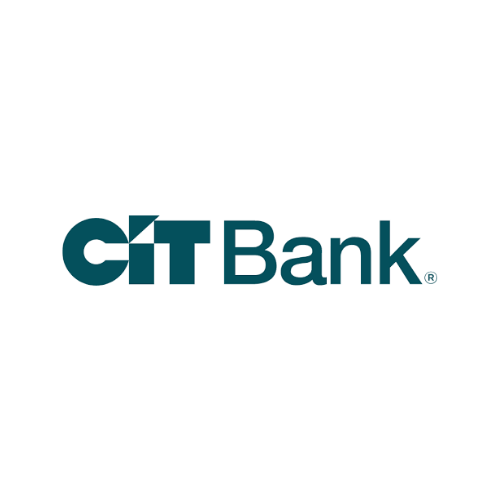14 Best Ways to Invest in Yourself
Some products in this article are from our partners. Read our Advertiser Discloser.
You’ve got a great job; you bought a house, you diligently save for retirement, so now is a great time to think about how you want to focus on yourself and grow as a person.
Investing in yourself means more than opening retirement accounts and calculating how much you’ll need for the future (although that’s important too).
Investing in yourself means you’re learning, growing, and elevating your self-awareness. This way you can be the best version of you every single day.
How do you make this happen? It starts with taking a look at your daily habits and routines and assessing what’s working and what isn’t.
Then it involves setting a plan for how you can achieve your goals in small, bite-sized chunks. Change can be scary, but investing in yourself is so important.
These are the best ways to invest in yourself.
How To Invest In Yourself
You matter. And to be your best for others, the first step is to invest in yourself. Here are some great ways to take care of you.
1. Set Your Goals
If you haven’t set goals for yourself, take the time to do this now. Think about what you’d like to accomplish for the year and then segment the goals based on the category, such as finances, travel, career, and self-development.
If that’s too complicated, just create a list of three to five goals and keep it simple. Make sure you keep track of those goals and check in on a weekly or monthly basis. Set it in your Google calendar if you think you’ll forget.
2. Learn Something New About Your Industry
There’s nothing worse than feeling stagnant in your career or business, especially if you’ve been in the same industry for a while.
Be intentional about learning something new, as it relates to your line of work. (Even if it doesn’t, that’s OK too!)
Some free or inexpensive resources include:
- Books (visit your local library and rent books for free)
- Podcasts
- In-depth blog posts
- Webinars
- YouTube videos
- Local meetups
3. Focus on Your Health
Whenever I talk to people about the foods they regularly eat, most will say they need to cut out carbs or exercise a lot more. I’m not saying those things can’t be done, but for some reason, people seem to think that these are temporary things they can do to lose weight.
Diet and exercise are lifestyle changes that need to be incorporated into your daily routine. Getting healthy now means you may experience fewer problems down the road when you’re older.
If you really had to focus on one aspect to get healthy, start with the foods you’re eating.
Here are quick and simple ways to get healthier:
- Replace sugary sodas and juices with water and stop drinking your calories
- Replace sugary or salty packaged snacks with fresh fruit
- Walk and take the stairs every chance you get
- Eat more protein in the morning
Cook healthy meals at home and prepare them for the week so you can set yourself up for success (and save money in the process!).
Make sure to take breaks. You can even get paid for walking.
4. Schedule Regular Breaks and Downtime
Working hard and being productive needs to be balanced with moments of rest and taking breaks.
There’s a reason why you feel frazzled or mentally exhausted by the end of the day. If you’re not taking a full break you’re not giving your brain time to rest and refuel.
It helps to step away from the office and go for a brisk walk and soak up some vitamin D in the sun.
5. Hire a Coach
If you have some extra funds to spare on a coach, I highly recommend getting one. One of the best investments I ever made was hiring a business coach for six months.
Some big takeaways included how to set up your own business and how to effectively juggle multiple clients. I also learned to be more cognizant of what I was doing wrong when I was pitching to new clients.
My coach taught me that I needed strong structure and procedures so I can do the least amount of work on tasks I dislike and gravitate towards the things I enjoy.
Even if you don’t have your own business, a business coach can help you focus on work-related issues. Perhaps you’re having a difficult time juggling projects, or you’re not getting along with your team and need an outsider’s perspective.
A coach can guide you through how to communicate more effectively and arm you with the right mental tools to better handle situations that may arise.
You don’t have to get a business coach — there are all kinds of coaches that can help you improve and overcome challenging situations.
A coach can provide unique support and insight to help build your self-awareness so you’re more mindful and conscious.
6. Hire a Financial Advisor
Perhaps this is the year you want to make lots of financial improvements in your life. Maybe you’re ready to purchase a house or pay off your debt but aren’t sure what the next tangible steps are.
A financial advisor brings clarity for to how to do this by examining your finances and income with you. A plan is then created with you so you can realistically achieve your goals.
Just like a coach, however, a financial advisor doesn’t work for free, so if this isn’t realistic for your budget, don’t worry. There are plenty of free online resources you can use to understand what your financial situation looks like.
If you are not quite ready for a planner, use a free app to help you get an overview of your spending, income, and debt.
7. Use Financial Apps to Save and Invest
If you like using apps to check on things, why not use a financial app. Here are a few we found easy to use.
1. Betterment
You can roll your 401(k) over to Betterment. It is easy to understand and has nice automation features.
Betterment aggregates your other brokerage/retirement accounts so you can see a complete picture of your savings. It’s free to use, so sign up with Betterment to start making improvements to your finances.
2. Mint
Mint is mostly used to see mostly to see where my spending is going. While I could just as easily go to my online Chase account to view transactions, Mint rolls my other accounts (savings, checking, credit cards) into one place so it’s easy to see.
Mint isn’t the best when it comes to heavy-duty budgeting because it’s not really built for that. For example, when I make a purchase Mint automatically assigns that purchase to a certain category. I’ve noticed about 40 percent of the time, it’s wrong. Because of this, it’s hard to really get a granular look at my spending.
3. Micro-Investing Apps
How did we ever live without these wonderful micro-investing apps?
Financial apps automate your investments for you and throw them into a long-term savings fund for you.
These are three solid apps that automatically invest small amounts of change in your bank account for you.
- Acorns
- Robinhood
Using a site like Acorns or Robinhood for a few years with an initial investment of $20 can turn into thousands. You can then use that money to fund an IRA.
8. Sign Up for a High-Interest Savings Account
If you’re still using your big bank’s 0.01 percent interest savings account, it’s time to open a high-interest savings account with at least a 1 percent interest rate. Online savings accounts are usually free (no monthly fees) and are great for goal-oriented savings through opening sub accounts.
To illustrate, your main savings account can be your emergency fund, but you could also have more accounts under that main savings account.
I use sub-accounts for the big-ticket items I will spend money on. This helps me to actually spend less (which helps my overall budget) because I know I need to save for these things, which include:
- Snowboarding trips
- Car maintenance or repairs
- Holiday gifts, donations
- Dinner/happy hours/eating out
The top online savings accounts include:
- Ally Bank
- Aspiration Bank
- CIT Bank
These savings accounts will typically earn you 1 percent or higher, so move your money over and start some sub-accounts.
9. Learn a New Skill That You Can Apply to Your Job
How many moments have you stopped to wish you knew how to do XYZ at your job so you can quickly get it done?
If I had a dollar for every time I wished I knew how to use Photoshop better, I’d be rich. Obviously, I’m not a graphic designer, but having this skill under my belt could help push projects along faster and make my life a lot easier.
Becoming an expert in Photoshop isn’t realistic for me. So, I’ve done the next best thing and I trained myself to become fairly good at using Canva, which is a web-based software program. I spent time practicing, but also Googled and watched some YouTube videos to move the process along even faster.
Take a look at your job and what new skill you could learn to get projects completed faster.
You don’t necessarily need to enroll in a class or spend money when there are so many free online ways to learn how to do something. The following are my favorite resources that can help you learn how to do something more effectively.
- Khan Academy
- YouTube
10. Earn Extra Money
Earning money on the side can help you do things like pay off credit card debt and save faster.
Deacon, the founder of Well Kept Wallet, paid off $52,000 of debt in 18 months, and one of his side jobs was delivering pizza.
If you’re not earning a side income, now is the time to start the wheels turning!
There are so many resources you can use to start earning money. If the whole idea of earning a side income intimidates you, start with something easy, like listing an extra room in your house on Airbnb.
Other ideas include:
- Tutoring kids
- Driving with Uber or Lyft
- Delivering food for Uber Eats
- Selling your unwanted stuff (see below)
11. Let Go of Your Junk
Having a space that’s clean and organized is actually investing in yourself because you’re taking the time to have your space reflect your mind.
When you have a clutter-free space to come home to, it’s easier to relax, think, be creative, and enjoy your home.
These are some great apps to earn extra money from getting rid of the stuff you no longer want or need.
- Decluttr: An app that helps you clean out your unwanted DVDs, CD, and electronics
- OfferUp: An app that helps you sell just about anything
- Bookscouter: Website that will buy your used books
12. Update Your LinkedIn Profile
I don’t live and die by social media, but I do think it’s unavoidable in today’s digital landscape to have a pictureless, empty LinkedIn profile. If your previous roles aren’t fully detailed, take the time to get that done.
It only takes 10 minutes, and if you’re looking for a new job, it can help attract new recruiters to your profile.
Ask a former colleague or manager to write a recommendation for you.
Tip: Write one up and send it to them for approval so all they have to do is copy paste it to your page.
13. Start Journaling
Journaling has huge mental and physical benefits, including improving your IQ, boosting memory, and sparking creativity.
It helps you take a step back and look at your daily habits, challenges, and things you’d like to achieve. It allows you to be more mindful of what you could be doing better.
Writing down your thoughts is not only therapeutic but also allows you to dump it out and let it go.
I have been journaling for years and find that it helps me control the inner voice that is always waiting and wanting to be heard.
Journaling can be done in 5-10 minutes each day and should focus on prompts, so you’re not just writing mindlessly.
Some specific prompts include:
- Challenges you experienced
- Write about one thing you learned
- Jot down something you could’ve done better
- Name 2-3 things you’re grateful for
- What’s the most important task you would like to accomplish or accomplished?
14. Meditate for 5-10 Minutes Each Day
Meditation has proven, scientific benefits for your brain. Besides helping you to calm the mind of all the noise it experiences each day, meditation can help you:
- Reduce stress
- Improve concentration
- Increase self-awareness
- Improves cardiovascular and immune health
I’ve been meditating every single day for almost two years and it’s changed my life. The two biggest benefits are being able to concentrate on the moment and increased ability to stay focused.
All it takes is five to 10 minutes a day. It’s also nice to meditate a few times throughout the day, especially in stressful moments.
Summary
Investing in yourself means you want to do better and that you want to experience growth in your life.
Whether you want to get healthy, learn to meditate, or start journaling, the point is to concentrate on yourself so you can be the best version of you.





